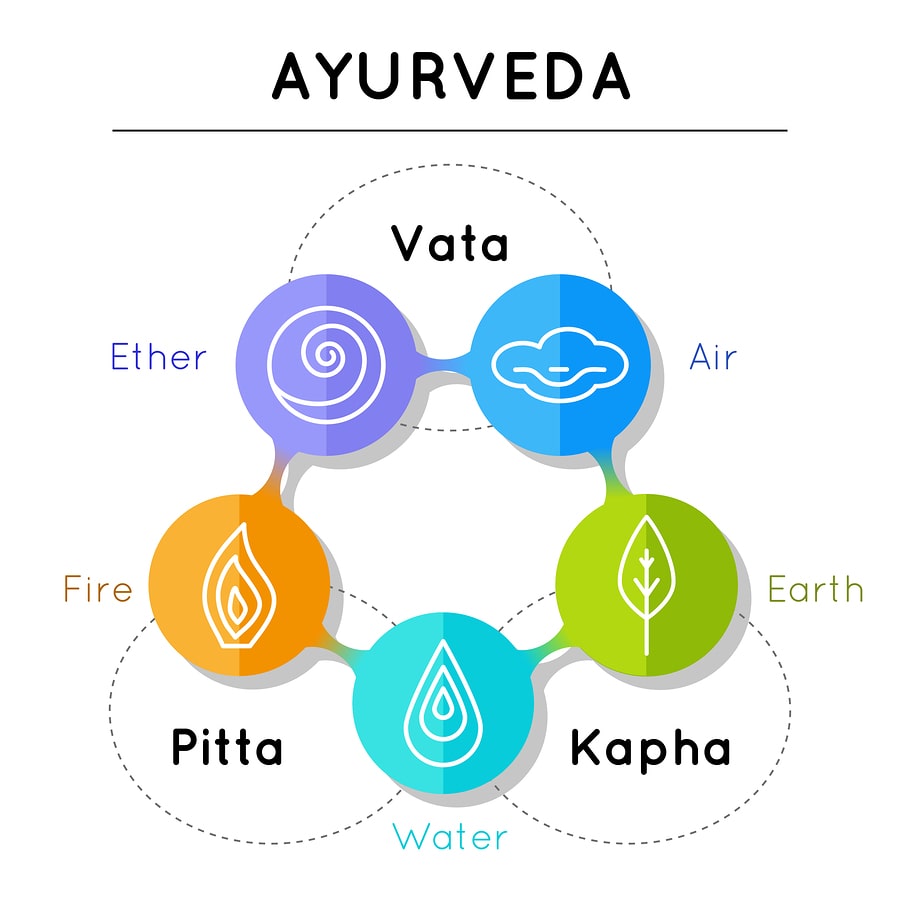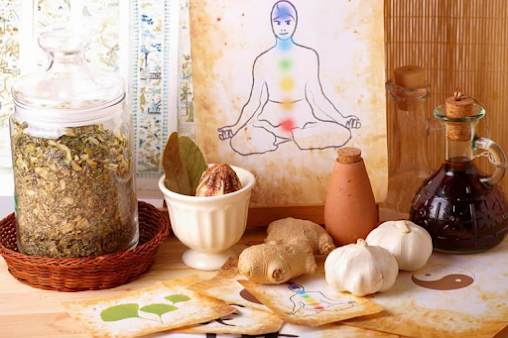If you're looking for a way to improve your health and wellbeing, you may want to consider practicing AyurYoga. What is AyurYoga?
It's a system of yoga based on the principle of three doshas or energies – Vata (air), Pitta (fire), and Kapha (earth) that helps to balance mind, body, and spirit.
Keep reading to learn more about the benefits of combining the principles of traditional Yoga theory with Ayurveda.
What is AyurYoga?
You might have heard about the ancient philosophies of Ayurveda and Yoga.
Although complementary to each other, these holistic sciences are separate entities in themselves. Yet, AyurYoga is a newly coined term that includes, yoga, meditation, and Ayurveda.
Ayurvedic yoga works on the premise that each person has a unique constitution based on the five elements in nature.
AyurYoga is a practice adapted to suit each person's unique needs based on their body type or physical and mental constitution.
This post will offer you insights into the unique intermingling between Yoga and Ayurveda and how this mind-body medicine can work wonders on your health.
Yoga Philosophy and Your Body Type
Yoga and Ayurveda are self-healing sister sciences that come from the Indian subcontinent. They both follow the principles of the Vedas and recommend a lifestyle based on your unique Prakriti or constitution.
Ayurvedic medicine classifies us based on our individual constitution of mind and body. Hence, each body/mind type will need different food and nutrition, exercise, and lifestyle habits than the other body types.
The same knowledge holds true for your yoga practice. So, an asana that gives profound results for one body type may not work well or even be harmful to another body type.
Hence, yoga asanas keep in mind your individual needs and your Ayurvedic constitution to achieve balance and wellness.
People practice yoga to cater to three different needs:
- Exercise for leading a healthy lifestyle
- Therapy for treating bodily disease and imbalances
- Growth, self-realization, and enlightenment
In the ancient wellness healthcare systems, yoga knowledge is taught using Ayurvedic terms and principles. This is particularly true when one explains the health advantages and physical effects of these yoga exercises.
Similarly, Ayurveda offers the principles of yoga to understand the mind-body and psychological aspects of healing.
How To Learn Your Body Type?

First, the classification takes into account the 3 Gunas – Sattva, Rajas, and Tamas. The Gunas refer to our mental/emotional health that governs our capacity to live in harmony with the world.
The second classification is based on the three doshas, Vata, Pitta, and Kapha. This also includes a psychophysical makeup that helps to determine and treat imbalances of the mind-body complex.
Both these classification models are important in properly estimating your body/mind nature.
Asanas in Relation to the Doshas

Each yoga asana has a defined effect on the doshas. This is similar to how Ayurveda classifies food based on its doshic effects.
With the use of correct prana or breath, one can alter an asana's doshic effects. Also, intention and thought also play a role in yoga practice.
By practicing certain asanas and breathing exercises (pranayama) in tandem with meditation, you can help create an inner balance that lasts.
Effect of Yoga Asanas on Your Doshas
The teachings of Ayurveda classify individuals based on three doshas namely Vata, Pitta, and Kapha. Each of these body/mind types has unique characteristics and energetics that affect the yoga practice.
For instance, Vata's energy is erratic and impulsive. This energy should be carefully restrained and supported. Vata energy should be calmed down and offered continuity in a determined and sustained way.
Pitta's energy is piercing and focused in nature. This energy must be gently calmed down and diffused. If rightly channeled, Pitta energy can convert into an enlightening force to reckon with.
Kapha's energy is laid-back and resistant. Hence, one must actively stimulate this energy in a consistent way. Kapha energy resembles the nature of the ice which must be slowly melted so that it can flow evenly.
This dosha knowledge can be applied to asanas in a two-fold way. Firstly, you can use knowledge of the doshas while you are doing yoga poses. Secondly, you can use different combinations of the doshas to understand how poses affect the doshas' physiological functions.
Yoga Asanas According to Ayurvedic Principles
The science of Ayurveda does not look at yoga exercises as tools to increase or decrease the various doshas. Instead, it views asanas as a method to balance the doshas and bring awareness and a state of equilibrium to its practitioners.
Ayurvedic medicine views diet (food and herbs) as a method to balance the tridoshas. It further teaches that certain food tastes (sweet, sour, salty, pungent, bitter, and astringent) work to either increase or decrease a dosha.
The same principle can be extended while performing asana exercises. So although performing all kinds of major asanas is important, their degree and exertion may vary as per your body type.
Every individual requires all major types of yoga asanas for a range of movement and relaxation for the whole body. These broad types of asanas can be then modified to suit every person's constitution.
Yoga asana disciplines should thus include sitting, standing, and other postures. Also, ascending, descending, expansion, and contraction movements in yoga should be included.
Closing Thoughts on AyurYoga
Each of us has unique physical, mental and spiritual potentials and capacities. These characteristics need a suitable personal orientation to be nurtured.
You need to develop knowledge regarding what will work for you based on your body type and what yoga asanas you should follow.
In this regard, Ayurveda and yoga are profound systems that have evolved through several millennia of experiences.
Ayurveda gives you a clear perspective on your unique constitution and what yoga practice is suitable for you. Both yoga and Ayurveda believe in the healing power of prana or the energy within each one of us.
You can completely heal yourself by learning how to use your breath and the science of prana energy forces. Ayurveda can enlighten us about the 5 elements of prana and how to utilize them for realizing optimal health and wellness.

Comments
Post a Comment